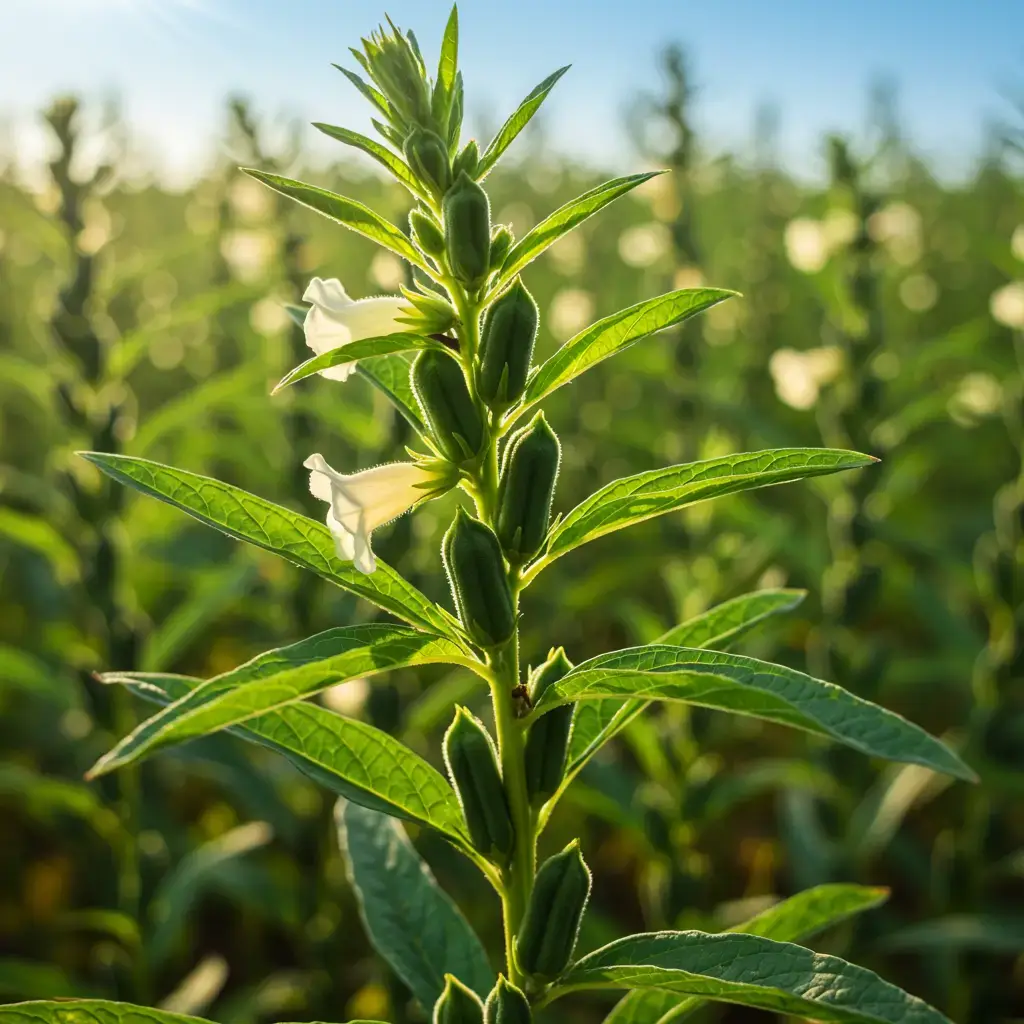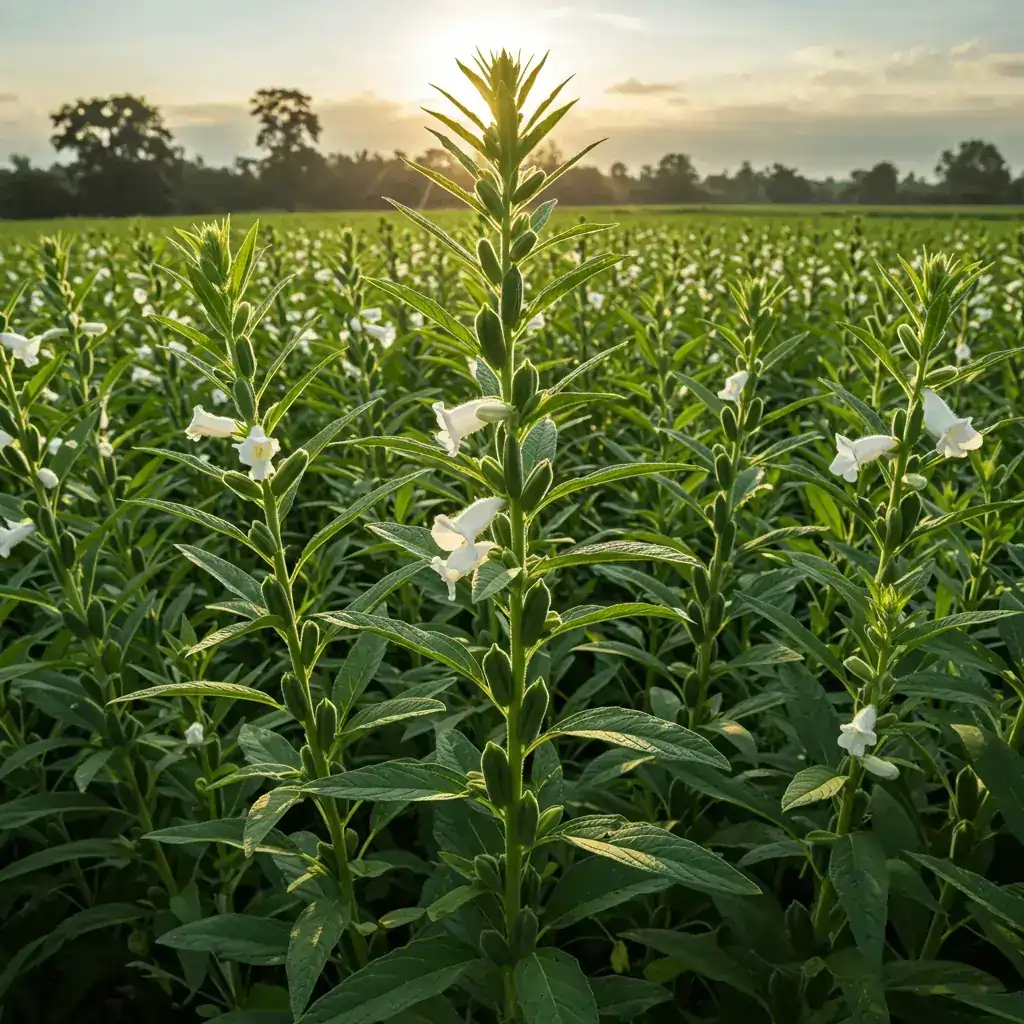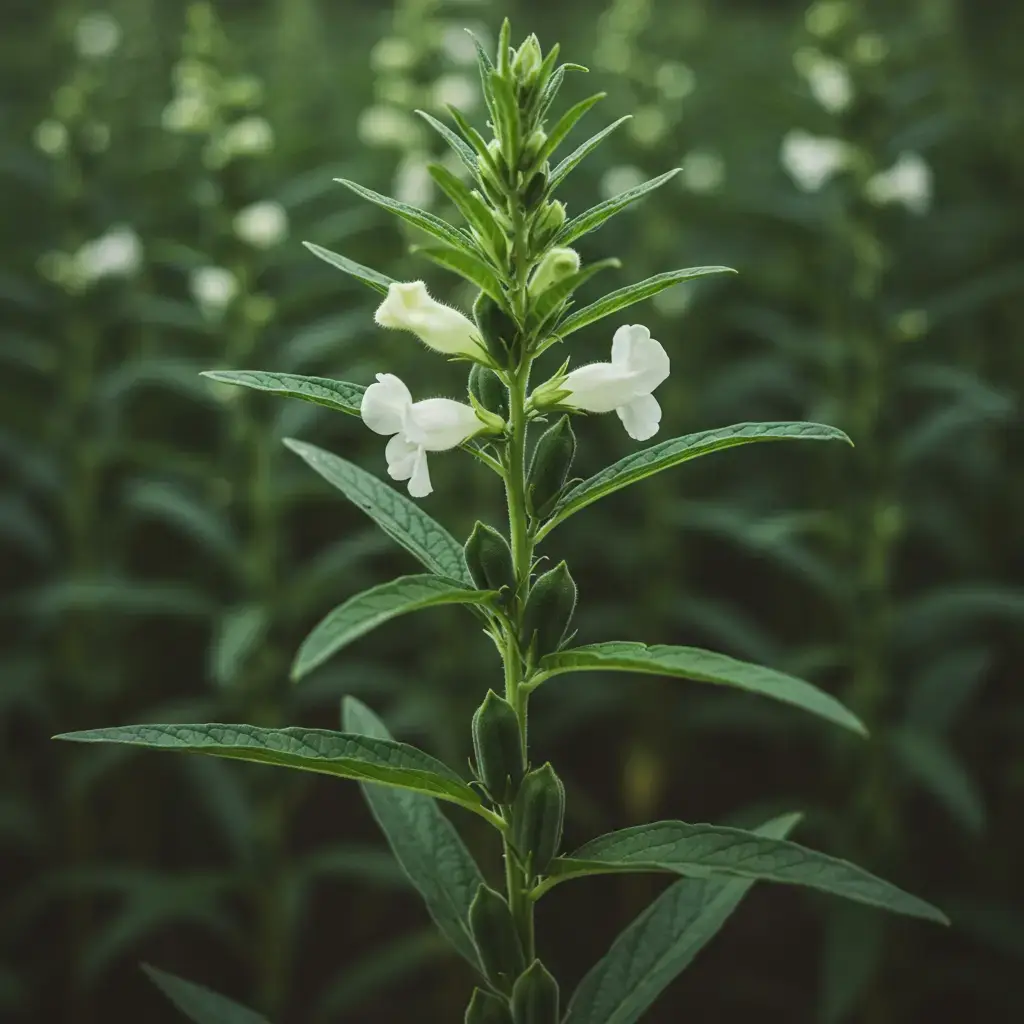Choosing the right growing zone is crucial for a successful sesame seed plant harvest. Climate, soil, and location all play a part in where these plants thrive. Whether you’re new to gardening or have experience, knowing your ideal zone is key. It ensures your sesame seed plant gets the right conditions to grow well.
Climate and soil type greatly impact sesame seed plant growth. Warmer areas with good drainage are usually best. Knowing your local USDA growing zone helps match your area’s conditions to the plant’s needs.
Understanding your zone is the first step to a great harvest. This guide covers important factors like sunlight, rainfall, and temperature. By matching these with the sesame seed plant‘s needs, you’re on your way to a successful and abundant crop.
Understanding Your Ideal Growing Environment
Sesame seeds come from the sesame plant (Sesamum indicum), a hardy annual. It needs specific conditions to grow well. Before planting, check your area’s climate, soil, and weather to see if it matches the plant’s needs.
Exploring Different Climate Zones
Sesame loves warm, frost-free areas. Here’s what to look for:
- USDA Zones 5-11: Best for spring planting
- Full sun exposure: Needs 6+ hours of sun a day
- Heat tolerance: Prefers temperatures between 60–85°F
Identifying Soil Conditions
Good soil is key. Test your soil for:
- Loamy or sandy textures
- pH levels between 6.0–7.5
- Good drainage to avoid root rot
Local Weather Patterns Impact
Weather affects growth. Watch for:
- Seasonal drought tolerance
- Risk of late frosts
- Humidity levels (sesame dislikes too much moisture)
Match these factors with the sesame plant’s needs for success. Start with a soil test and climate analysis. This will help you grow sesame well.
Key Strategies for Sesame plant growing Zone Success

Getting your land ready is key for sesame growth. Start by tilling the soil deeply to clear out debris and mix in organic matter. Pick seeds that fit your climate and plant them 1–2 inches deep. Space rows 2–3 feet apart for good root growth and air flow.
Watering needs to meet plant requirements without soaking the soil. Use drip irrigation to water roots directly and avoid waterlogging. Fertilize with balanced nutrients based on soil tests. Too much nitrogen can slow down flowering. Regular weeding and organic pest control protect your plants.
Understanding how sesame seeds are harvested ensures top quality. Keep a close eye on plants as they mature. Harvest when capsules are yellow and start to open. Wait until 70–80% of capsules split for best seed retention. Dry the plants in the sun until they are completely dry before threshing seeds.
After harvesting, store seeds in airtight containers in a cool, dry place to keep them fresh. These steps, along with your zone’s climate and soil, will help your sesame crops thrive. Being precise at every stage, from planting to how sesame seeds are harvested, is crucial for success.
Sesame Seed Plant Care and Cultivation Tips
Learning how to care for sesame seed plants is key to a bountiful harvest. Focus on two main areas: watering and fertilizing, and keeping the plants healthy. Follow these steps to grow strong plants from start to finish.
Watering and Fertilizing Guidelines
Keeping plants hydrated and fed is crucial. Here’s how to do it right:
- Water deeply but not too often—soil should be moist but not wet. Aim for 1-2 inches of water each week, adjusting for rain.
- Use a balanced fertilizer (10-10-10 NPK) every 4-6 weeks when plants are growing. Apply at half-strength to avoid harming the roots.
- Stop fertilizing 6 weeks before harvest to avoid slowing down growth.
Pruning and Support Techniques
Pruning helps with air and light, reducing disease. Try these techniques:
- Remove lower leaves when plants are 12 inches tall to strengthen stems.
- Use bamboo canes to support tall plants and prevent them from falling over in windy areas.
- Trim crowded branches with clean shears to help seeds grow evenly.
Regular checks during sesame seed plant care help spot problems early. Look for yellow leaves (too much water) or wilting (not enough water). Make changes as needed for the best results.
How to Grow Sesame Seeds at Home: Practical Advice

Ready to start growing sesame seeds at home? This guide makes it easy. Follow these steps to grow healthy plants and enjoy a big harvest.
Step-by-Step Growing Process
- Prepare soil: Pick soil that drains well and has a pH of 6.0–7.0. Add compost for extra nutrients.
- Sow seeds: Plant seeds ½-inch deep in spring when soil is 60°F (15°C). Space them 3–4 inches apart in rows 2–3 feet wide.
- Water wisely: Keep the soil moist but not too wet. Don’t water from above to avoid mold.
- Monitor growth: Sesame plants love full sun. Weed often and mulch to keep moisture in.
Harvest and Storage Methods
Wait until seed pods crack open and seeds are dark brown. Cut the stalks and dry them upside-down in a well-ventilated area for 1–2 weeks. Store seeds in airtight containers in a cool, dark place for up to 6 months.
Overcoming Common Cultivation Challenges
- Pests: Use insect netting to keep birds and insects away. Handpick beetles if you see them.
- Poor germination: Soak seeds overnight before planting. Make sure the soil isn’t too wet.
- Early frost: Cover plants with frost cloth if it gets too cold suddenly.
With these tips, growing sesame seeds at home is easy. Follow these steps, and you’ll soon have fresh sesame to use in recipes or as a garden feature.
Conclusion About Sesame plant growing Zone
Your sesame plant’s growth zones and soil quality are key to seed production and health. By matching your location to USDA climate zones 8-11 and ensuring well-drained soil, you lay a strong foundation. The strategies discussed, from spacing to pest management, help you harvest successfully.
Using methods like hand-weeding and organic mulch boosts survival rates. Harvesting when capsules split naturally ensures high-quality seeds. Local agricultural extensions, like USDA resources, provide specific advice for your area’s soil pH or drought tolerance.
By following these care practices, your sesame plants become more resilient against diseases or heat stress. Begin by testing your soil with home kits, then follow the guide’s steps. Regularly check moisture and nutrient levels to help your plants reach full maturity. With these methods, your sesame crop can thrive every year.
FAQ About Sesame plant growing Zone
What kind of plant do sesame seeds come from?
Sesame seeds come from the sesame seed plant, known as *Sesamum indicum*. This plant is grown mainly for its seeds. These seeds are used in many dishes.
How are sesame seeds harvested?
To harvest sesame seeds, plants are cut when the pods are brown and dry. The pods are then shaken to get the seeds out. Some farmers use machines, but others still do it by hand.
How do I care for my sesame seed plant?
To care for your sesame seed plant, make sure the soil drains well. Water it regularly and fertilize it properly. Watch out for pests and diseases. Also, give it enough sunlight and prune it to help it grow better.
Can I grow sesame seeds at home?
Yes, you can grow sesame seeds at home! Start with good seeds. Plant them in soil that drains well and gets lots of sunlight. Water and fertilize them right to grow a good crop.
What are some common challenges when growing sesame seeds?
Growing sesame seeds can be tough because of pests, diseases, and uneven watering. Keep an eye out and use the right pest control. Also, water them the same amount every time to avoid problems.
When is the best time to plant sesame seeds?
Plant sesame seeds in the spring, after the last frost. This lets the soil warm up, which is best for the plant.
How much water does a sesame seed plant need?
Sesame seed plants need water often, especially when it’s dry. Keep the soil moist but don’t overwater. Too much water can harm the roots.

